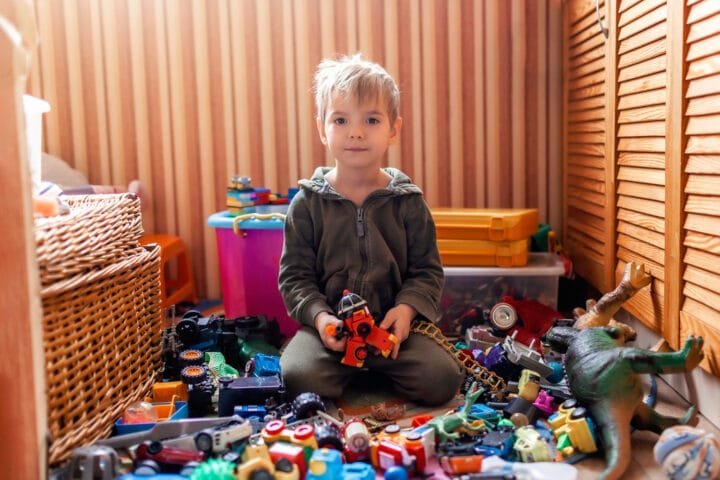Introduction
How many days a week to teach Spanish for children? Early language acquisition has long been recognized for its cognitive and cultural advantages. Numerous studies have shown that children who learn a foreign language at a young age are more likely to develop enhanced problem-solving capabilities, improved memory, and superior multitasking skills. This is mainly due to their brains being highly adaptable during what researchers call the “critical period” for language acquisition.
One of the most widely spoken languages in the world, Spanish offers a rich array of grammatical structures and vocabulary that can significantly benefit cognitive flexibility in young learners. Children exposed to Spanish early on often display increased creativity in addressing complex problems. Moreover, bilingualism has been consistently linked with improved academic performance, social interactions, and a deeper understanding of diverse cultures.
Tools such as the First 100 Words in Spanish: A Bilingual Book for Toddlers and Kids and the Melissa & Doug Spanish See & Spell Educational Language Learning Toy are resources and gateways to a world of fun and discovery. These tools help young learners enjoyably learn basic Spanish, building a strong foundation for future language growth.
Another significant advantage of studying Spanish for children is cultural awareness. By learning this ancient and vibrant language, children gain an appreciation for Hispanic cultures and build empathy and respect for cultural diversity—essential in today’s interconnected world. This cultural education is a valuable aspect of language learning that goes beyond cognitive benefits.
Understanding how children acquire language is critical in determining how many days a week to teach Spanish to children. Language acquisition in early years often occurs through exposure and interaction rather than formal instruction alone. It emphasizes the importance of consistent engagement with the language throughout a child’s developmental years.

Cognitive and Developmental Benefits of Early Language Learning
Language acquisition during early childhood has a profound impact on brain development. The “critical period” hypothesis suggests that the ability to acquire language is strongest in the early years of life, typically before puberty. During this period, the brain is particularly receptive to linguistic input, allowing children to pick up new languages more quickly and easily.
One of the cognitive benefits of early language learning is enhanced executive function. Bilingual children often perform better on tasks that require switching between activities, filtering out irrelevant information, and focusing on the task. This improvement in executive function is closely related to the brain’s ability to manage multiple languages, which involves constant activation and inhibition of linguistic pathways.
Additionally, bilingual children tend to exhibit superior memory skills, particularly in working memory—the ability to hold and manipulate information over short periods. This skill is crucial for academic success, underpinning a wide range of cognitive processes, from reading comprehension to mathematical reasoning.
Tools like the LeapFrog LeapStart Learning Friends: 200 Words in English & Español can significantly nurture these cognitive abilities. By providing interactive and repetitive exposure to English and Spanish, this tool helps reinforce language learning while boosting cognitive functions such as memory and attention.
The Role of Cultural Awareness in Language Learning
Beyond cognitive benefits, learning Spanish provides children with an invaluable cultural education. Spanish is the second most spoken language in the world, and it is the official language in 21 countries. As children learn the language, they also gain insights into Spanish-speaking communities’ history, traditions, and values.
Cultural awareness and sensitivity are essential skills in the 21st century. By understanding and appreciating different cultures, children become more empathetic and open-minded. This cultural competence enhances social interactions and prepares children to thrive in a globalized world.
The First 100 Words in Spanish book introduces children to essential vocabulary while offering glimpses into the cultural contexts of these words. For example, words related to food, family, and festivals provide an entry point for discussing cultural practices in various Spanish-speaking countries.
Incorporating cultural elements into language instruction can make learning more engaging and meaningful for children. For instance, educators can use resources like the Melissa & Doug Spanish See & Spell Educational Language Learning Toy to create activities that teach language and introduce children to cultural symbols and practices.
Factors Affecting How Many Days a Week to Teach Spanish for Children
Several factors come into play when considering how many days a week to teach Spanish to children. These include the learner’s age, attention span, learning capacity, learning environment, available resources, and the specific goals of the language program.
- Age of the Learner: Young children, especially those under seven, have heightened neuroplasticity, making them particularly adept at learning new languages. Frequent and consistent exposure is crucial for this age group to assimilate Spanish sounds and grammar effectively. For toddlers and preschoolers, daily exposure through tools like the Spanish Flash Cards for Kids can help reinforce vocabulary and essential language structures.
- Attention Span and Learning Capacity: The frequency and duration of language lessons should align with a child’s developmental stage. Preschoolers typically have shorter attention spans, benefiting from brief, engaging activities. In contrast, older children can handle longer, more structured lessons. Striking the right balance when deciding how many days a week to teach Spanish to children is essential to maintaining their interest and avoiding burnout.
- Learning Environment: The setting in which Spanish is taught significantly influences how many days a week it should be incorporated. In formal classroom settings, structured lessons with predefined schedules are the norm. However, in informal settings, such as at-home learning or immersion programs, there is greater flexibility in how often the language is practised. For example, using the Complete Book of Spanish Workbook for Kids at Home allows parents to adapt the frequency and intensity of lessons to suit their child’s learning pace.
- Resources and Support: The availability of qualified teachers, textbooks, digital tools, and community support is crucial in determining the frequency of Spanish instruction. Schools with ample resources may offer more frequent lessons, while parental involvement can further enhance exposure outside the classroom. Comprehensive resources like the LeapFrog LeapStart Learning Friends can support consistent practice and reinforce what is taught in school.
- Goals of the Language Program: The objectives of the Spanish language program will dictate the required frequency of lessons. Programs aimed at achieving conversational fluency necessitate daily, immersive sessions, while those focused on essential vocabulary acquisition require fewer, but still consistent, lessons each week.
The Importance of Consistency in Language Learning
Research indicates that consistency is critical to effective language acquisition. Unlike subjects like math or science, which can be learned in blocks, language learning requires regular practice and reinforcement. The adage “use it or lose it” is particularly relevant here, as infrequent exposure to a new language can quickly forget what has been learned.
When considering how many days a week to teach Spanish to children, it is essential to strike a balance that provides sufficient exposure without overwhelming the student. For younger children, shorter, more frequent sessions are more effective, while older students benefit from longer, less frequent classes that allow for deeper immersion.
For instance, elementary students could benefit from 15-20 minute Spanish sessions each day, supplemented with interactive activities using resources like the Spanish Flash Cards for Kids. This approach ensures regular reinforcement while keeping the learning experience fun and engaging.
On the other hand, older children might prefer fewer but longer sessions, such as three 45-minute classes per week. It allows for more in-depth exploration of complex language concepts while providing time for other academic and extracurricular activities.
Practical Considerations for Educators and Parents
When determining how many days a week to teach Spanish to children, it is essential to consider the overall educational and extracurricular balance. Overloading children with too many Spanish lessons could detract from their ability to participate in other essential activities, such as sports, arts, or social engagements.
Educators and parents should aim for an optimal frequency that maximizes language retention while allowing for a well-rounded education. It might involve integrating Spanish lessons into daily routines naturally and sustainably. For example, using the Complete Book of Spanish Workbook for Kids for weekly practice at home can complement formal lessons and provide additional reinforcement.
Additionally, considering each child’s learning style and preferences is crucial. Some children thrive in a structured environment with daily lessons. In contrast, others may benefit from a more relaxed approach with fewer sessions each week but with more interactive and playful activities.
Understanding Different Frequencies and Their Impact
Deciding how many days a week to teach Spanish to children involves understanding the impact of different frequencies on language retention and proficiency.
- High-Frequency Sessions (4-5 times per week): High-frequency exposure to Spanish provides consistent immersion, ideal for rapidly developing listening and speaking skills. Programs that emphasize daily interaction, like the Bilingual School of New York’s Spanish immersion sessions, have shown significant gains in language proficiency due to this consistent reinforcement. Tools like the First 100 Words in Spanish can be used daily to introduce and reinforce essential vocabulary, ensuring children regularly engage with the language.
- Moderate-Frequency Sessions (2-3 times per week): Moderate frequency offers a balanced approach that keeps children engaged without overwhelming them. This frequency allows reflection and practice between lessons, which can benefit retention. Schools like the Californian Spanish Language Academy use this approach, combining structured lessons with sufficient time for students to process and practice material at their own pace.
- Low-Frequency Sessions (1 time per week): Low-frequency sessions suit young children or beginners just being introduced to the language. These sessions are typically more playful and less intensive, focusing on creating a positive and enjoyable learning experience. For instance, the Melissa & Doug Spanish See & Spell Educational Language Learning Toy can be used in these settings to make the initial exposure to Spanish fun and interactive.
Each of these frequencies offers distinct advantages, and the choice should be tailored to the child’s age, learning style, and the specific goals of the language program. By customizing the frequency of Spanish lessons, educators and parents can create an optimal language-learning experience that meets the unique needs of each child.

Case Studies and Examples
Examining case studies of successful language programs provides valuable insights into how many days a week to teach Spanish to children:
- Bilingual School of New York: This institution employs a daily Spanish immersion model, where students use the language throughout the day. The program emphasizes the importance of consistent interaction, which has led to significant gains in students’ vocabulary and grammar retention. This approach underscores the benefits of high-frequency exposure, especially for younger learners during the critical period of language acquisition.
- Californian Spanish Language Academy: With a three-day-a-week model, this academy offers a balanced approach that allows students to practice and reinforce material between lessons. The academy combines structured learning with opportunities for informal practice, which helps students retain information without the pressure of daily classes. This method illustrates the effectiveness of moderate-frequency sessions, particularly for children who may benefit from a less intensive schedule.
- Montessori School of Buenos Aires: This school utilizes a bilingual curriculum alternating between English and Spanish on different days. This approach helps prevent cognitive overload while fostering bilingual proficiency. By incorporating language learning into the broader educational experience, this model highlights the importance of finding a rhythm that works for each child’s learning style.
These case studies demonstrate that while the optimal frequency of Spanish lessons can vary depending on the student’s needs and the program’s goals, consistency and engagement are critical components of successful language acquisition. Whether through daily immersion or a more spaced-out schedule, the key is ensuring that children regularly interact meaningfully with the language.
Conclusion
Determining how many days a week to teach Spanish to children requires careful consideration of various factors, including the child’s age, attention span, learning environment, available resources, and the specific goals of the language program. Research suggests that a frequency of three to five sessions per week is generally optimal for language retention and engagement.
Ultimately, teaching Spanish to children should be tailored to meet each child’s individual needs and interests. By creating engaging learning environments and offering consistent opportunities for language practice, educators and parents can help children build a solid foundation in Spanish while fostering a lifelong passion for language learning.
Incorporating tools like the First 100 Words in Spanish: A Bilingual Book for Toddlers and Kids, Melissa & Doug Spanish See & Spell Educational Language Learning Toy, LeapFrog LeapStart Learning Friends: 200 Words in English & Español, Spanish Flash Cards for Kids, and the Complete Book of Spanish Workbook for Kids can significantly enhance the learning experience, making Spanish both accessible and enjoyable for young learners.
By thoughtfully considering how many days a week to teach Spanish to children, we can ensure that they receive bilingualism’s cognitive, cultural, and social benefits, preparing them for a bright and connected future.






































































